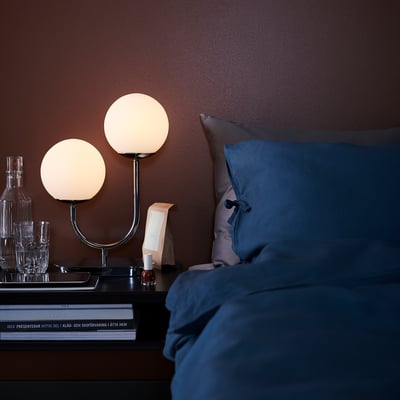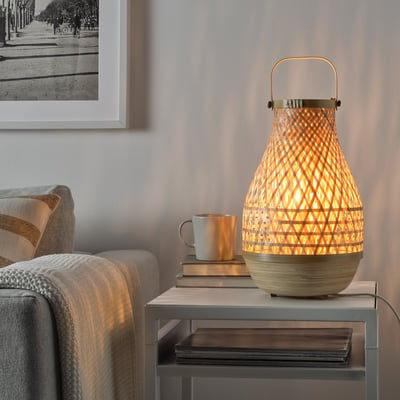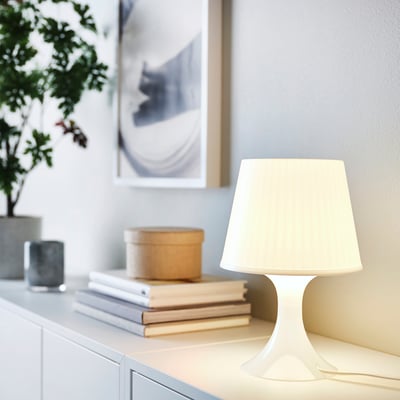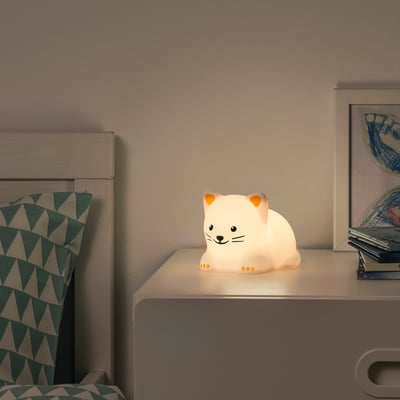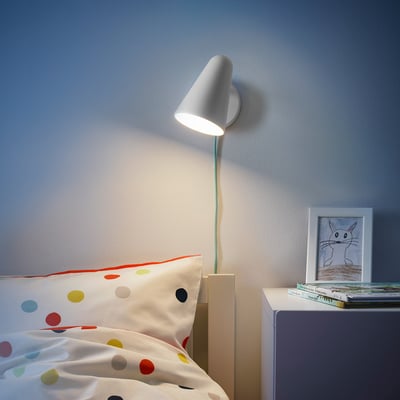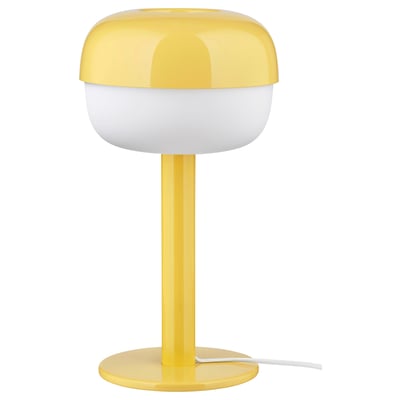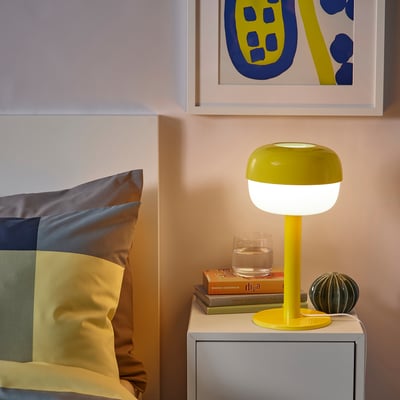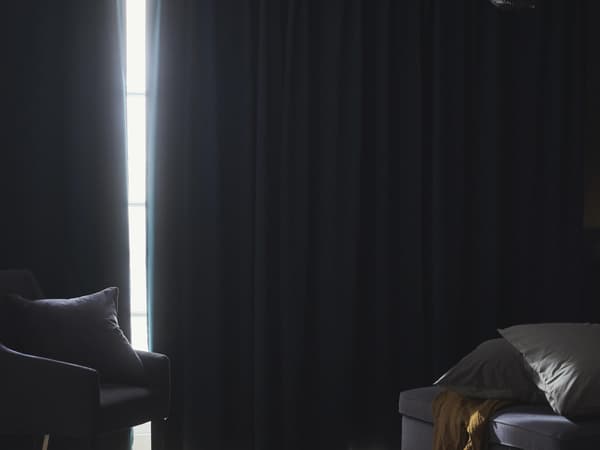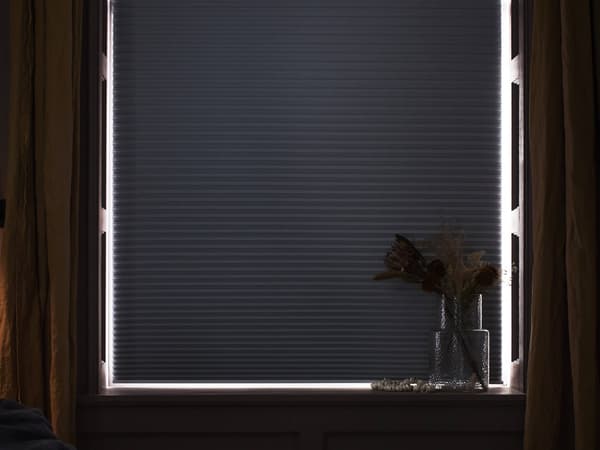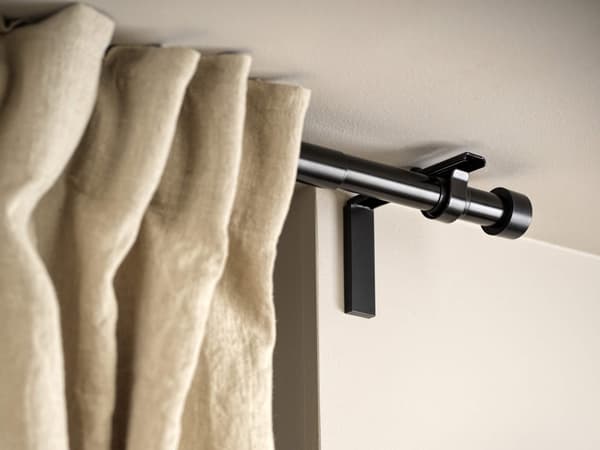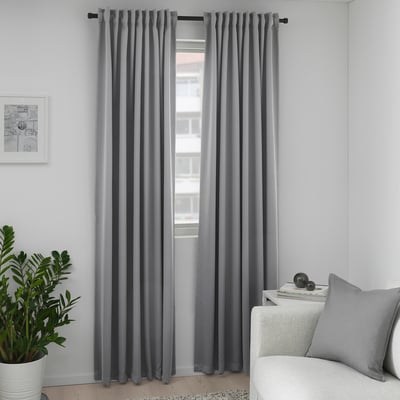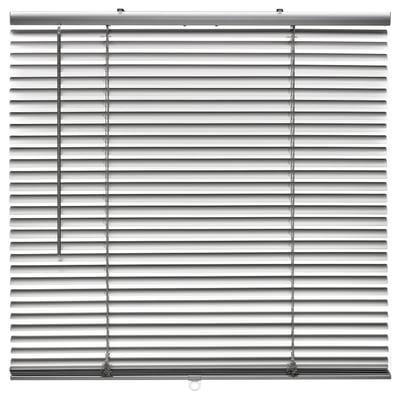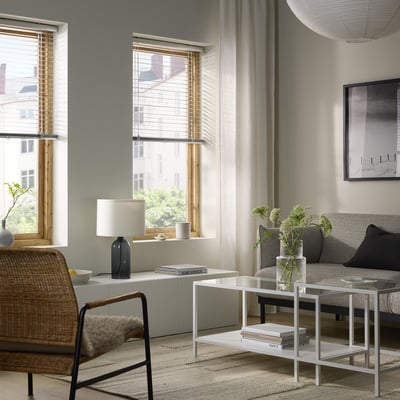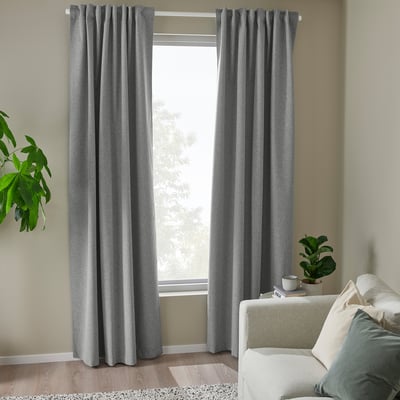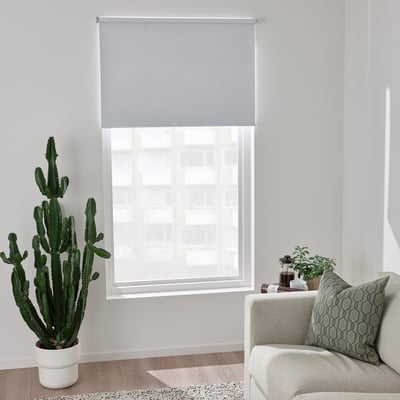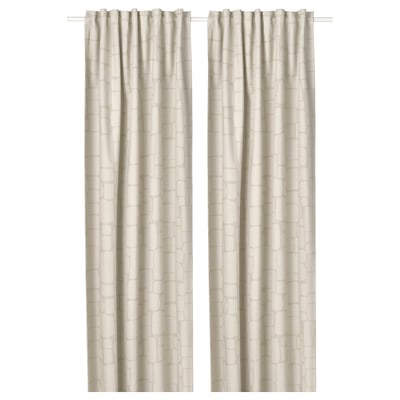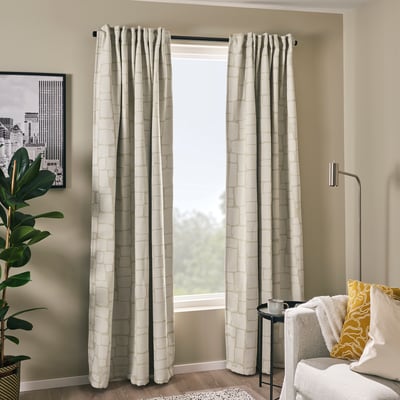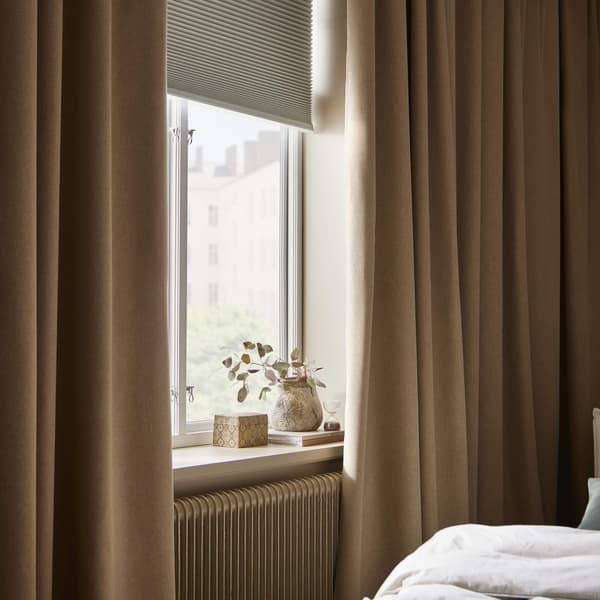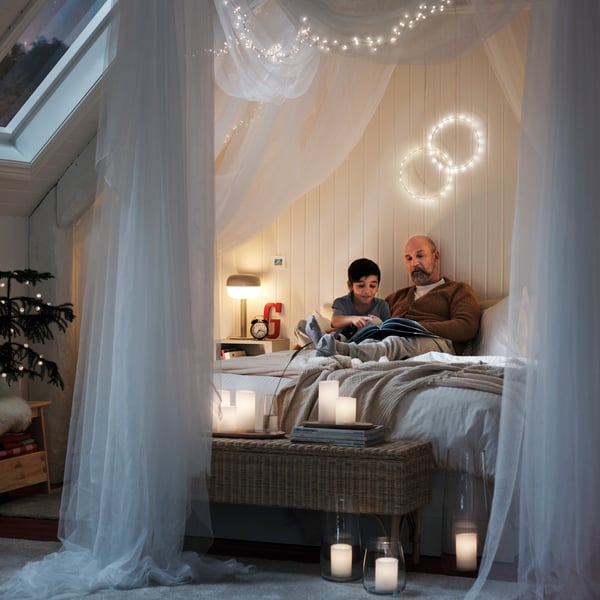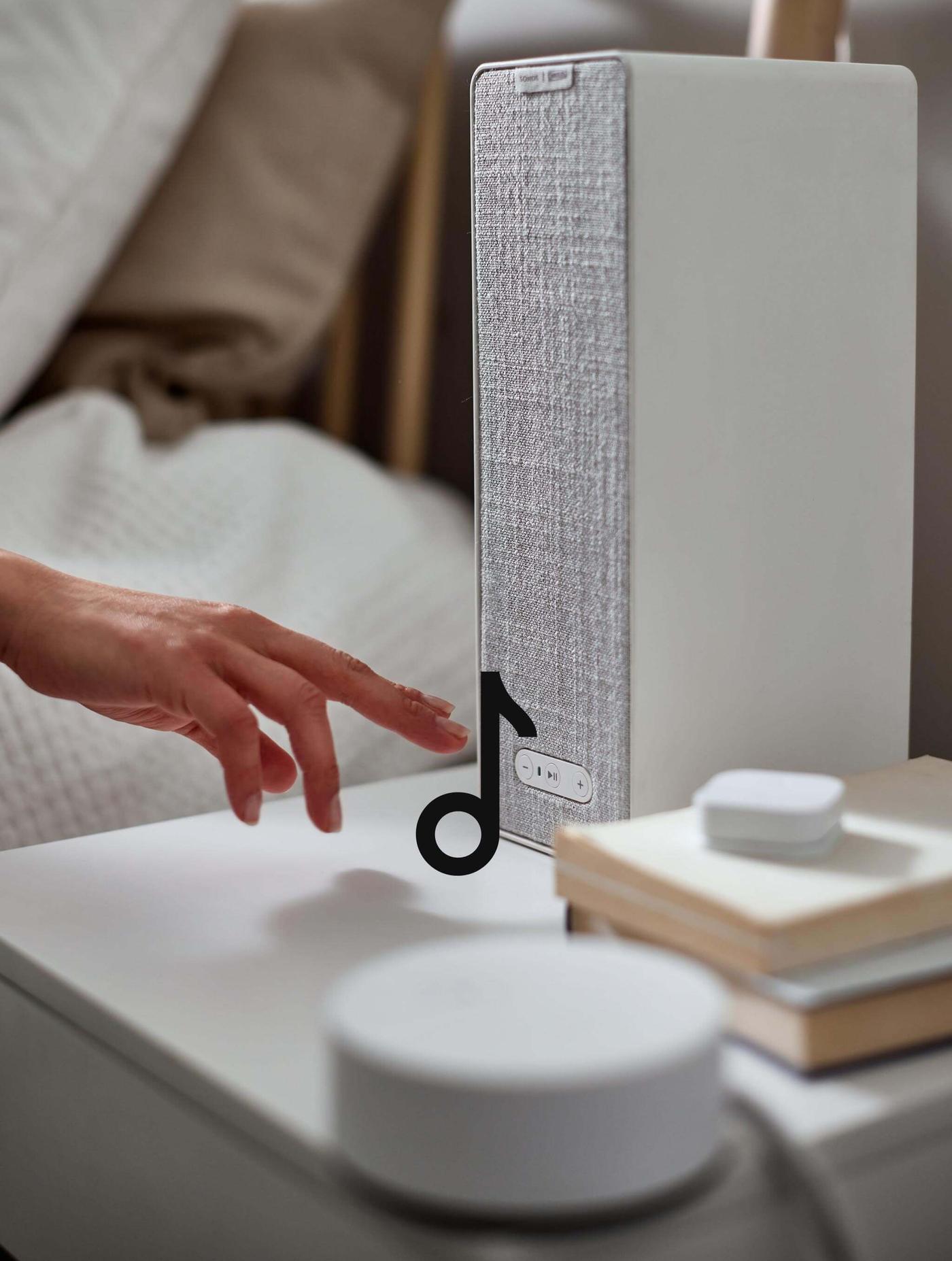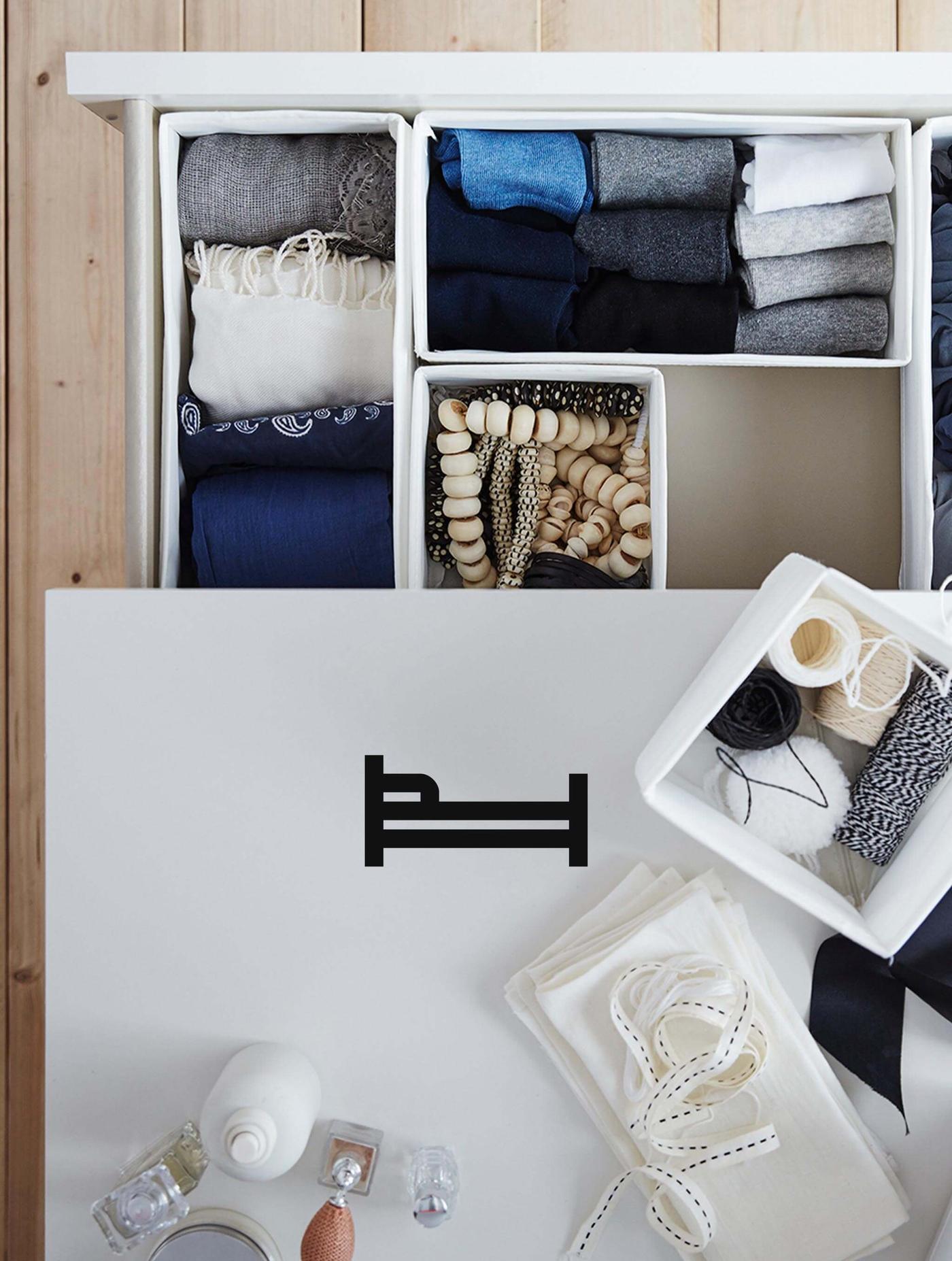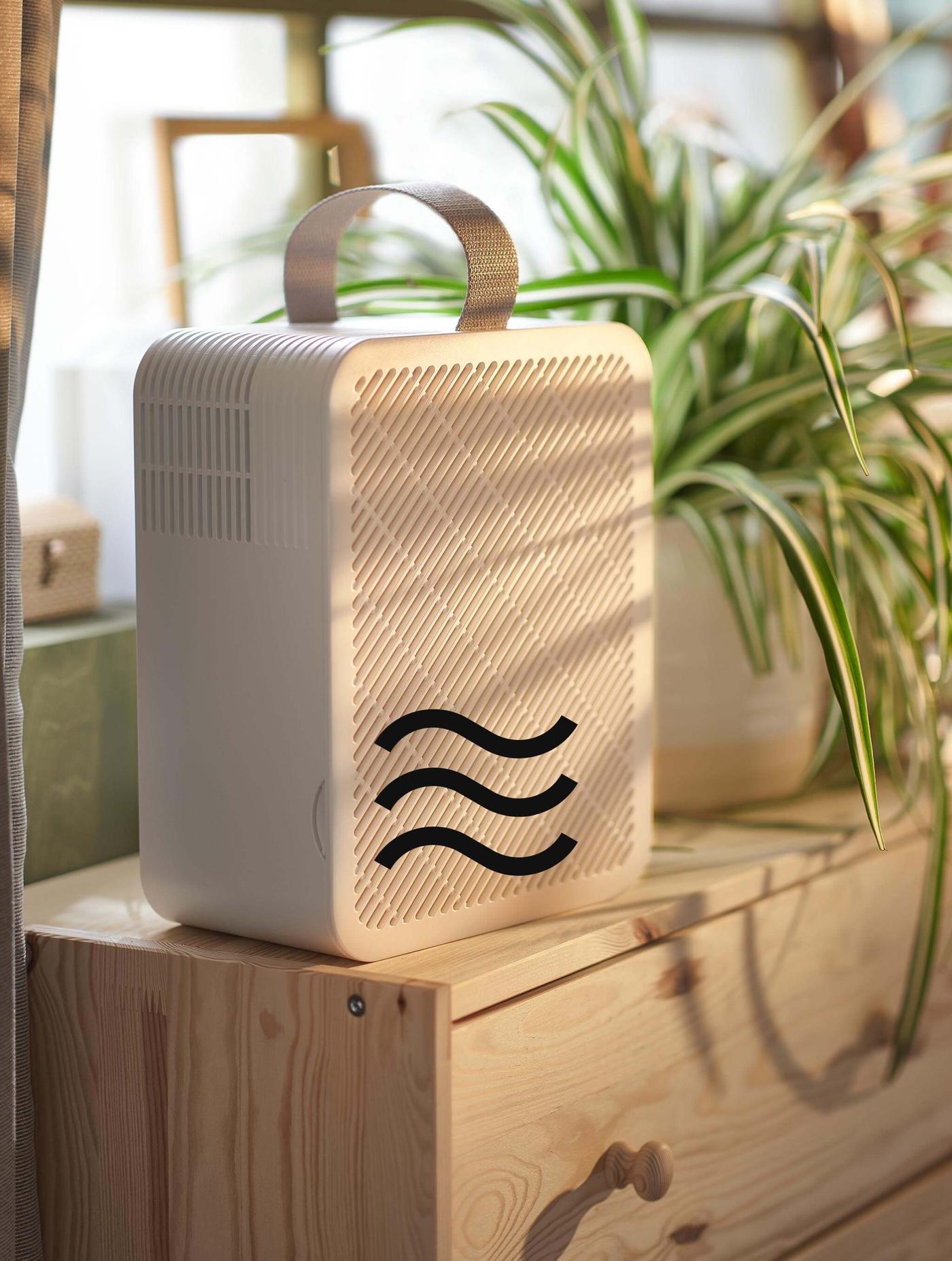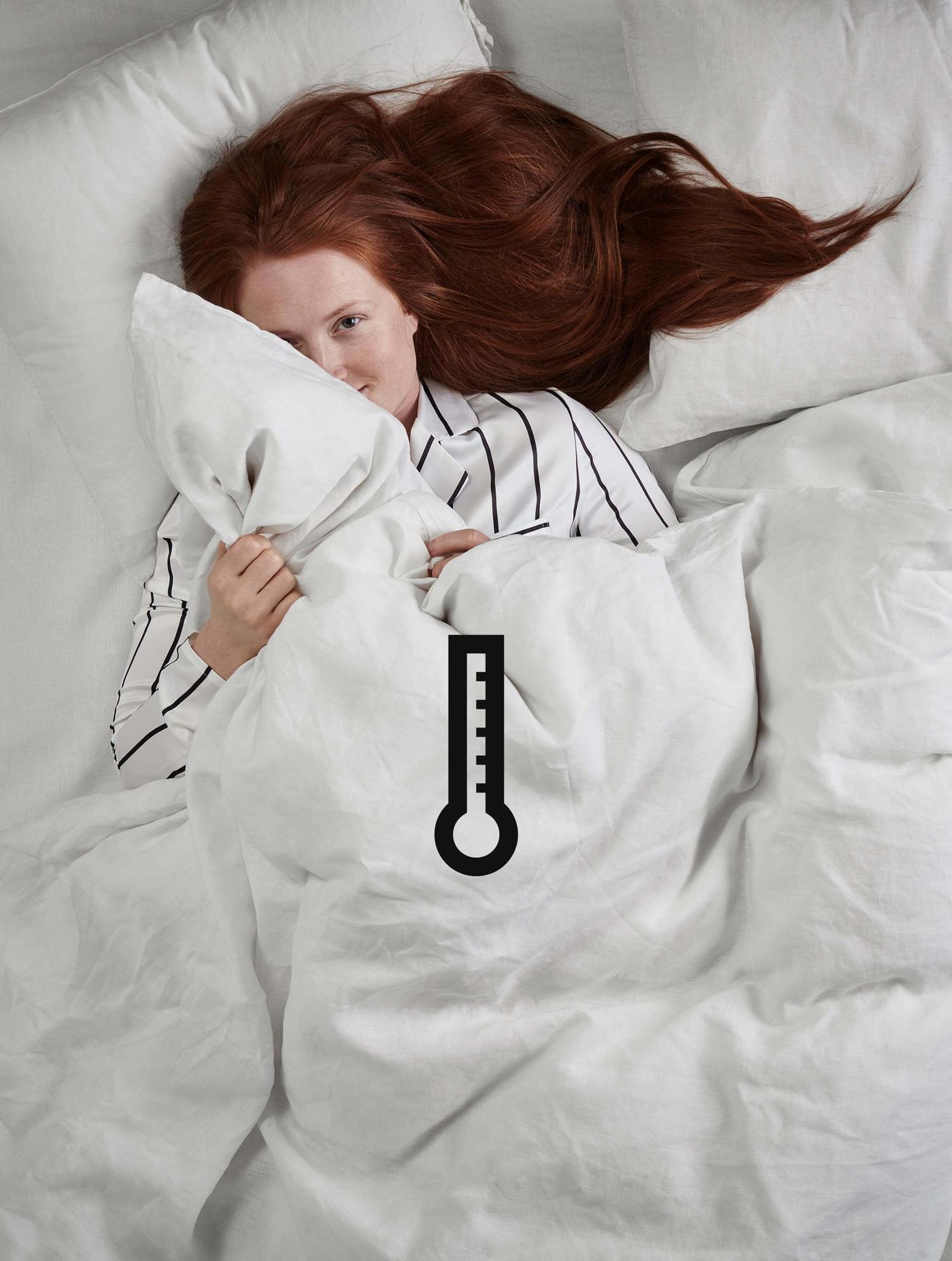Lighting to improve your sleep
Bedroom mood lighting makes the atmosphere
Decorative lighting and mood lights have a calming effect. SPETSBOJ table lamp is small and easy to place anywhere you want to bring some coziness and mood lighting into your bedroom. Easy to turn on/off with the small button on the side – and just turn the metal shade if you want to dim.
Close the curtains and dream on
Blackout curtains are a dreamer’s best friend. You can easily block out the moonlight, the sunlight, the streetlights, your neighbor’s absurdly elaborate Christmas lights, all of the lights. They’re also a lovely way to style up your bedroom with a blast of solid color or a fun pattern.
Explore more essentials for great sleep
Your lights are set for a deep, dark slumber. Now let’s learn about the other five components that can help you get a great night’s sleep every night!
Even if you’re fortunate enough to be able to fall asleep just about anywhere, too much light can negatively impact your sleep. Both natural and artificial light can influence your circadian rhythm—your body’s 24-hour cycle of activity and rest. If you’re receiving too much light in the hours before and during sleep, your body can stay in an alert state instead of winding down for the day. Because different types of light can also inhibit your body’s natural production of the sleep-related hormone melatonin, you may find yourself still counting sheep long after your head hits the pillow after a too-bright night.
Consider investing in dimmable lamps and lighting that you can begin slowly dimming after the sun goes down, or in the hours leading up to bedtime. You can also reduce the total number of lights on in your house, or use lower intensity light sources in the evening.
Blue light from electronics, including mobile phones and televisions, is among the worst types of light to take in before sleep. Blue light inhibits your body’s ability to produce melatonin—a natural, sleep-promoting hormone. Resist the urge to check your email or social media ‘one last time’ before bed and see if your sleep benefits!

